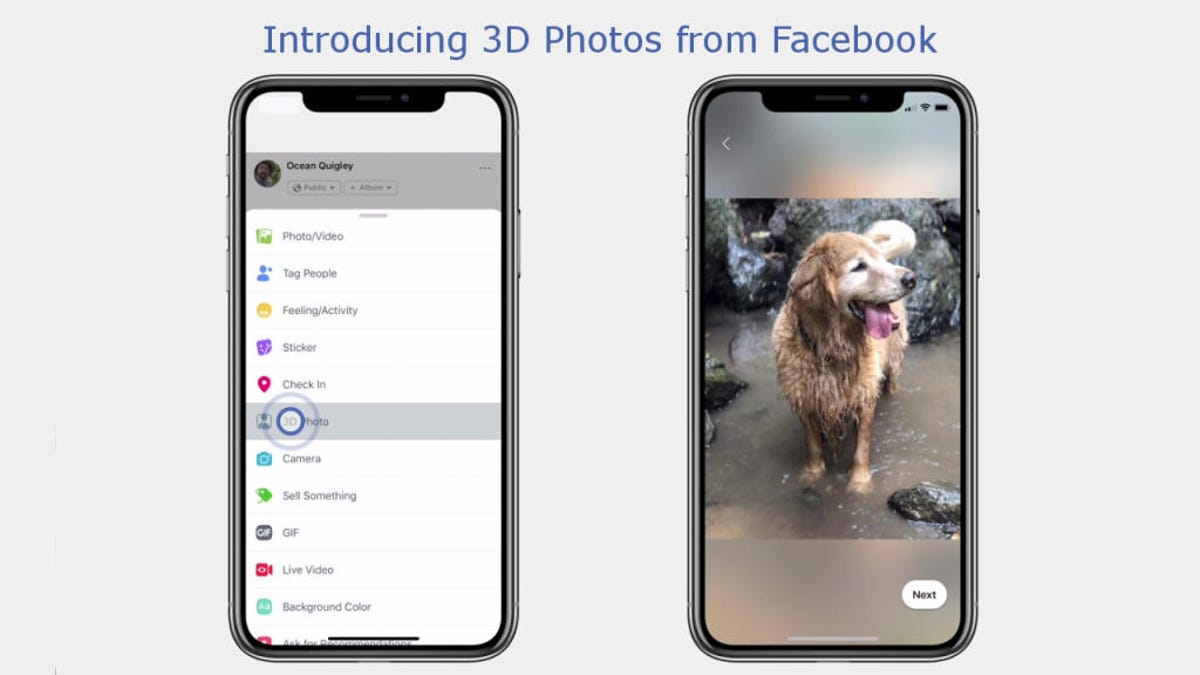Facebook's 3D photos are ready for your news feed
The social network says it's about creating virtual space where you can revisit your memories.

You can upload photos taken in Portrait Mode onto Facebook news feed as 3D photos.
Now you can post 3D photos on your Facebook news feed.
Facebook on Thursday started rolling out a feature that turns 2D shots taken with a compatible dual-lens phone into 3D photos. On your news feed, you can scroll, pan and tilt to see the photos in 3D.
Everyone is able to see 3D photos in their news feed now, and the ability to create and share them will roll out in the coming weeks.
The social network revealed in May at its F8 conference that it planned to create 3D spaces and experiences from personal photos, which included creating 3D images out of 2D photos and videos. The ultimate goal is to use artificial intelligence to turn photos into 3D data that can form a virtual space where you can revisit your memories.
The technology plays with the distance between subject in the foreground and background, according to the company's blog post. It uses the depth maps stored in photos taken using Apple's Portrait mode on the iPhone 7 Plus , 8 Plus , X and XS.
Facebook didn't immediately respond to request on whether the feature works with more devices.
To make 3D photos, you can take a photo in Portrait mode and upload that photo on your news feed as a 3D photo. Facebook says the images come out best when: your subject is three or four feet away with multiple layers of depth in the background; your subject has contrasting color from the background; and your subject isn't shiny. If your subject has solid edges, that'll help as well, according to Facebook
In addition, you can see the 3D photos in VR using the Oculus Browser on the Oculus Go headset or Firefox on the Oculus Rift headset.
NASA turns 60: The space agency has taken humanity farther than anyone else, and it has plans to go further.
Taking It to Extremes: Mix insane situations -- erupting volcanoes, nuclear meltdowns, 30-foot waves -- with everyday tech. Here's what happens.

